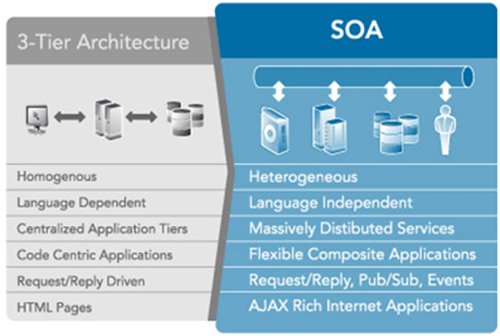![]()
WHAT IS AN ERP?
Software engineers created programs to monitor inventory, reconcile balances, and report on status. In the 1980s, it grew to encompass more manufacturing processes, prompting many to call it MRP-II or Manufacturing Resource Planning. By 1990, these systems had expanded beyond inventory control and other operational processes to other back-office functions like accounting and payroll, setting the stage for ERP as we’ve come to know it. The term ERP (Enterprise Resource Planning) was coined in 1990 by Gartner.
Today, ERP has expanded to encompass Business Intelligence (BI) while also handling “front-office” functions such as sales force automation (SFA), marketing automation point-of-sale (POS) and eCommerce. With these product advancements and the success stories coming out of these systems, companies in a broad range of industries — from wholesale distribution to eCommerce — use ERP solutions.
Now comes new online inventions in 2000’s, even though the “e” in ERP stands for “enterprise,” high-growth and mid-size companies are now rapidly adopting ERP systems. Software-as-a-Service (SaaS) solutions — also referred to as “cloud computing” — have helped fuel this growth. Cloud-based solutions not only make ERP software more affordable, they also make these systems easier to implement and manage. Perhaps even more important, cloud ERP enables online and real-time reporting and BI, making them even valuable to executives and staff seeking visibility into the business.
BIRTH OF iONS
In 2003, iONS/Integrated Online Solution for appliance retailing was implemented in one of the major retailing businesses in the north of the Philippines. Using Software-As-A-Service (or pronounced as SaaS), delivering applications over the Internet — as a service to a computer user becomes a success. Instead of installing and maintaining application on every computer in the company, the solution is designed to simply access it via the Internet, freeing yourself from complex software and hardware maintenance limiting licensing fees to few servers.
Implementing online solutions and shifting to Service-Oriented Architecture (SOA) which enables the next generation of web-enabled applications running on a cost efficient, secure open-source platform thus making the 3-Tier Architecture obsolete (see Figure 1.1). We offer development, technical support, training and consulting services to customers nationwide and thru its top-tier affiliations.

- Heterogeneous – other technologies are capable to be bonded into one-single solution
- Language Independent – programming and technical staff could have multiple skill sets
- Massively Distributed Services – solutions developed can be deployed anywhere and anytime
- Flexible Component Applications – process modules are “glued-in” to become an enterprise solution
- Request/Reply, Pub/Sub, Events – bits of information are requested simultaneously on a per user event
- AJAX Rich Internet Applications – asynchronous real-time data transmission is given to all solutions
iONS FUNCTIONALITIES
- Inventory Management; online and real-time inventory monitoring capabilities from stock purchase ordering to receiving, transfers and logistics to store and/or site sales invoicing.
- Sales Operations (Point-of-sale); actual sales processes involving credit card sales, cash invoicing and even charge sales invoice that creates customer installment plans on appliance loans.
- Customer Relations Management; customer sales transaction tracking and cash collections on all credit related appliance sales transaction. It also provides direct printing to cash receipts.
- Accounts Receivables; monitors customer balances and maintain customer accounts aging.
- Account Payables; track supplier active purchases and monitor cheque vouchering on all supplier-related transactions.
A Proven Model
Service-Oriented Architecture (SOA) solution is now a mainstream technology. With the use of existing open-source software, the code can be developed, obtained, viewed, change and re-distribute without limitations. The corporate user is not bound to a single vendor or service provider. Anyone can resolve discrepancies and security problems because the development model foster community-based collaboration. Other mature technologies (ie. Fact ERP.NG, Oracle Peoplesoft, Microsoft Dynamics,, SAP, Sage) can be mixed within layers of secured component installation and still come out with an effective enterprise solution. Every component has flexibility, security, reliability, and scalability roles. Increased return of investment and decreased total cost of ownership.
